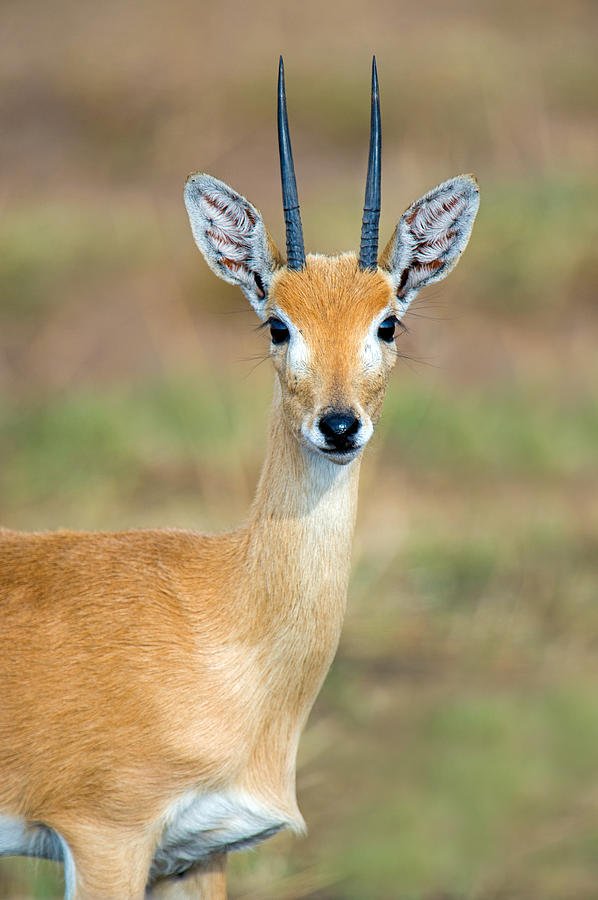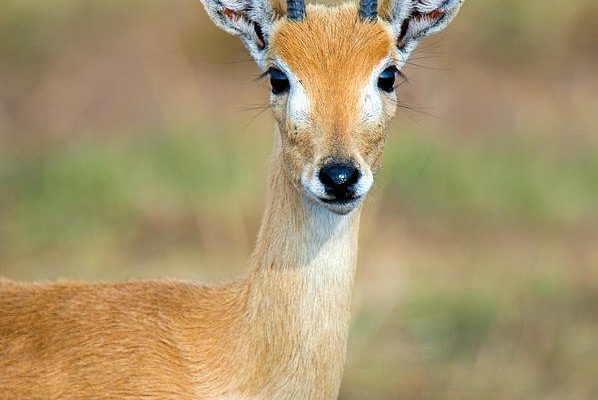
So, what makes oribis so special? Picture a mix between a dance performer and a stealthy ninja. They’re incredibly agile and can jump surprisingly high, which is a big part of their survival strategy. They’re also known for their sweet, gentle nature. If you’re curious about these little wonders and want to learn more, you’re in the right place. Let’s dive into the top ten facts that’ll make you appreciate these adorable creatures even more!
1. A Unique Species of Antelope
The oribi (Ourebia ourebia) belongs to the family Bovidae, which includes other familiar antelopes like springboks and gazelles. However, oribis have a unique charm— both in size and behavior. They’re relatively small, standing around 60-75 cm at the shoulder and weighing between 20-30 kg. To put that in perspective, they’re about the size of a medium dog!
Here’s the thing: oribis have a very distinct appearance. Their coats are usually a warm, sandy brown that helps them blend seamlessly into the grasslands they call home. Their large eyes and slender legs make them adorable but also incredibly efficient at navigating their environment. This camouflage is essential for avoiding predators like leopards and hyenas.
2. Masters of Jumping
One of the most amazing things about oribis is their incredible jumping ability. When faced with danger, they can leap up to 2 meters high in a single bound! Imagine a gymnast soaring through the air; that’s essentially how these little antelopes handle threats.
Their agility doesn’t just help them escape predators; it also assists them in navigating through tall grasses and bushy areas. By jumping over obstacles, they can quickly get to safer grounds. This skill is crucial, especially in the wild, where their survival depends on being nimble and quick.
3. Social Structure: Solitary or Social?
Now you might be wondering, are oribis social creatures? Well, yes and no! Generally, oribis are solitary animals and prefer to live alone or in small family groups. However, during the mating season, you might see males seeking out females to form temporary pairs.
Males are known to be quite territorial, often marking their area with scent markings to ward off competitors. This behavior adds a layer of drama to their lives, akin to a soap opera where the stakes are survival and reproduction. It’s a fascinating glimpse into their world, where personal space and relationships matter significantly.
4. Habitat Preferences
Oribis thrive in open grasslands, savannas, and bushy areas. They love places where they can easily hide from predators but also have clear visibility to watch out for dangers. These habitats not only provide them with ample food but also give them the perfect environment to display their agility.
Interestingly, oribis are often found at higher altitudes, particularly in the eastern parts of Africa. They enjoy grasslands that are less disturbed by human activity, making them somewhat of an indicator species for healthy ecosystems. Protecting their habitat is crucial for maintaining biodiversity, and it’s a reminder of how interconnected all wildlife is.
5. Diet and Feeding Habits
Oribis are herbivores, primarily feasting on a diet of grass, shoots, and leaves. They’re selective grazers, meaning they often choose the more nutritious parts of plants, which is a savvy survival tactic. Honestly, they remind me of those picky eaters who only want the best snacks!
They typically feed during the early morning and late afternoon when it’s cooler. This behavior minimizes their risk of dehydration and helps them avoid the heat of the day. Plus, by being active during these times, they can remain hidden from predators while still satisfying their hunger.
6. Communication Methods
You might be surprised to learn that oribis have a unique way of communicating with each other. They use a range of vocalizations, body language, and scent markings to convey their feelings and intentions. For example, a sharp whistle can signal alarm when they sense danger nearby.
Their body language is equally fascinating. When they’re feeling threatened, they often freeze and remain still, which helps them blend into their surroundings. This “playing dead” strategy is incredibly effective for avoiding detection. It’s like playing hide-and-seek, but in a game where staying quiet is literally a life-or-death situation.
7. Conservation Status
Oribis face various challenges, primarily due to habitat loss and hunting. Although they’re currently classified as “Least Concern” on the IUCN Red List, their populations are declining in some areas. Protecting their habitats is essential for their future survival.
Several conservation initiatives are underway to help preserve their environments. These efforts include habitat restoration, sustainable land-use practices, and protection from poachers. You might even feel inspired to get involved in local conservation projects, as every little bit helps keep these delightful creatures safe.
8. The Captivating Mating Rituals
When it comes to love, oribis have their own unique rituals. During the mating season, males will often engage in displays to attract females. They might leap around, showcasing their agility and strength, almost like athletes competing for attention.
Once a male catches a female’s eye, he’ll often mark his territory with scent to assert his dominance. It’s a fascinating blend of charm and competition—showcasing bravery while trying to woo their mate. Watching this dance of love in the wild is a remarkable experience that speaks to the heart of animal behavior.
9. Lifespan and Reproduction
In the wild, oribis typically live for about 8 to 12 years. However, in captivity, their lifespan can extend up to 15 years. When it comes to reproduction, females usually give birth to a single calf after a gestation period of around 7 months.
Newborn oribi calves are often hidden in tall grass for safety during their first few weeks, while the mother returns periodically to feed them. This strategy is vital for protecting the young from predators. It’s kind of like a protective bubble—keeping them safe until they’re strong enough to venture out into the world.
10. Why Oribis Matter
Ultimately, oribis play an essential role in their ecosystems. They help maintain the health of their habitats by grazing on grasses, which promotes new growth and helps maintain biodiversity. When you think about it, these little antelopes contribute to the balance of their environment, much like how a small cog can keep a giant machine running smoothly.
Their presence is also a reminder of the rich biodiversity we have in the world. Learning about oribis encourages us to appreciate not only this unique species but also all the interconnected wonders of nature.
In conclusion, oribis may be small, but they have an impressive range of traits and behaviors that make them a remarkable part of our planet’s wildlife. By understanding and appreciating them, we can work towards preserving their habitats and ensuring that these fascinating creatures thrive for future generations. So the next time someone mentions the African savanna, remember to include the charming oribi in the conversation!

